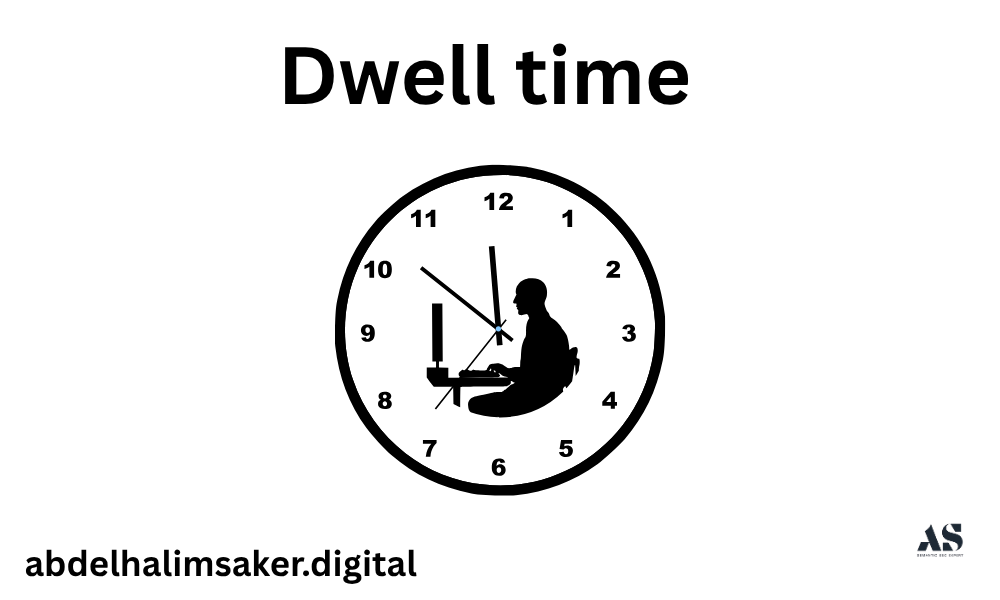
Understanding hover, scroll, and dwell time is critical for modern SEO because these behavioral metrics reveal how users interact with a page. Search engines interpret these micro-signals to determine content quality, intent satisfaction, and overall engagement depth. When users pause, explore, and stay longer, Google perceives the content as valuable and trustworthy, reinforcing its authority in the ranking system.
What Each Metric Represents
Hover, scroll, and dwell time represent different engagement phases. Hover indicates curiosity; scroll reveals exploration; dwell time reflects satisfaction. Together, they create a behavioral feedback loop showing how efficiently a page fulfills user intent.
| Metric | Represents | Behavioral Meaning | SEO Relevance |
|---|---|---|---|
| Hover | Curiosity | Indicates title–intent alignment | Influences click probability |
| Scroll | Exploration | Shows depth of engagement | Highlights structure and content quality |
| Dwell | Satisfaction | Reflects user fulfillment | Correlates with trust and ranking potential |
Each metric measures a specific stage of interaction, from initial SERP exposure to the final return to results or internal navigation.
Hover Time: Measuring Curiosity
Hover time measures how long a cursor pauses over a result or link before being clicked. This micro-interaction reflects curiosity and expectation alignment. If users hover longer on a SERP result, Google interprets that snippet as contextually appealing or well-aligned with the query intent. High hover engagement often precedes higher click-through rates and stronger SERP presence.
To optimize for hover time, write action-based titles that match user intent, such as “Discover How Hover Time Affects SEO.” Use descriptive meta descriptions that promise clear informational gain. Employ schema markup to enhance snippet visibility and highlight relevance cues. When curiosity and intent alignment intersect, Google rewards that page with better engagement-based ranking signals.
Scroll Depth: Measuring Exploration
Scroll depth measures how far visitors move through the content. It represents exploration and structural flow. Deep scrolling behavior indicates logical hierarchy, visual balance, and topic progression. When scroll metrics are low, it usually signals that the page fails to maintain user interest or clarity.
To improve scroll engagement:
- Use question-based headings that guide readers through a logical journey.
- Integrate visual anchors such as tables, charts, or highlighted data points.
- Design concise paragraphs that answer specific sub-queries.
- Maintain consistent spacing and visual rhythm.
Search engines interpret extensive scroll behavior as an indicator of value continuity — a sign that users find successive sections relevant. Long scroll sessions strengthen a page’s perceived completeness, improving its contribution to topical authority.
Dwell Time: Measuring Satisfaction
Dwell time is the duration between when a user clicks on a result and returns to the SERP. It directly measures satisfaction and intent fulfillment. Long dwell time signals that the content met or exceeded user expectations. Short dwell time indicates disappointment, misalignment, or thin value.
Factors that extend dwell time include clear structure, concise openings, and internal links that promote further reading. Directly answer the main query in the introduction, then expand with examples or case studies. Use data-supported arguments, not fluff. Readers who remain longer validate the relevance of the content, and Google interprets this as a sign of credibility.
How Google Collects and Interprets These Signals
Google gathers behavioral data through implicit feedback mechanisms embedded within its ecosystem. Hover, scroll, and dwell metrics feed into machine-learning systems like RankBrain and NavBoost, helping the algorithm adjust rankings based on user satisfaction trends. These signals are not manually measured but inferred through aggregated user behavior patterns across browsers, devices, and query contexts.
Implicit Feedback Sources
Google collects engagement data from several touchpoints to form a holistic behavioral model.
| Source | Behavioral Data | Use Case |
|---|---|---|
| Chrome browser | Cursor tracking, dwell duration | Measures curiosity and retention |
| Android WebView | Scroll and gesture data | Evaluates mobile exploration depth |
| Search logs | Click-return timing | Detects satisfaction or dissatisfaction |
| SERP experiments | Hover-to-click conversion rate | Tests snippet performance |
This data informs ranking models that evaluate how well a page performs in the real world. Pages that consistently generate deeper engagement gradually gain historical trust. Poor-performing pages experience ranking stagnation or loss.
SERP Testing and Dynamic Adjustment
Google performs constant A/B testing in search results. It alternates snippets, headlines, and descriptions across random user groups. When one version leads to longer hover or dwell behavior, that variation becomes the preferred choice. Through this adaptive learning, Google refines SERP composition to maximize satisfaction rates. The goal is to reward results that demonstrate both semantic precision and behavioral validation.
Temporal Aggregation and Historical Profiling
Engagement data accumulates over time, forming a behavioral history for every page and domain. Google uses this historical data to predict future reliability. If users consistently interact positively with a domain’s content, that domain earns retrieval priority in related queries. Behavioral stability becomes a signal of trust and authority. This is why pages with long-term engagement retain rankings despite algorithm updates — they have proven user validation.
Improving Hover, Scroll, and Dwell Metrics
Optimizing behavioral metrics involves aligning structure, readability, and intent fulfillment. Each metric responds to a specific area of improvement: hover improves through SERP clarity, scroll through content flow, and dwell through comprehensive satisfaction.
Improving Hover Metrics
Hover begins with the snippet presentation. The way your page appears in the SERP determines curiosity. Strong meta titles and descriptions set clear expectations and attract engagement before the click.
To optimize:
- Use active verbs and question-based titles that align with the searcher’s language.
- Include clear value propositions such as “Step-by-Step,” “Proven,” or “Complete.”
- Implement schema to enrich snippets with structured elements like ratings or FAQs.
- Keep titles under 60 characters and descriptions under 160 for visibility.
These improvements increase perceived relevance, triggering more hovers and clicks — which reinforce your engagement metrics.
Increasing Scroll Engagement
Scroll engagement depends on the ability to sustain attention. Each section must deliver incremental informational value. Readers should feel rewarded for continuing downward.
Practical methods:
- Start each section by referencing the one before it to maintain narrative coherence.
- Use bullet lists and short paragraphs to avoid fatigue.
- Add contextual bridges that link semantically adjacent topics, keeping readers within your content cluster.
- Avoid abrupt topic shifts that break reading rhythm.
Smooth content progression creates higher scroll depth, helping search engines understand that users consume the full context rather than scanning fragments.
Extending Dwell Time
Dwell time reflects overall satisfaction. To extend it, improve the content loop—the journey users take between internal pages. When readers move naturally between connected articles, dwell time increases without manipulation.
Techniques include:
- Begin with direct answers, then expand into insights or examples.
- Use tables or infographics to support comprehension.
- Add related content recommendations mid-article, not just at the end.
- Optimize load speed and mobile readability.
The longer users stay and interact, the more search engines associate your domain with reliability and topical expertise.
Design and Readability Optimization
Visual design directly affects engagement. Well-designed pages reduce friction, guiding the eye smoothly through the hierarchy.
| Design Element | Primary Effect | Target Metric |
|---|---|---|
| Readable typography | Reduces cognitive strain | Dwell |
| Above-the-fold summaries | Captures initial interest | Hover and scroll |
| Consistent layout | Enhances navigation clarity | Scroll |
| Sticky navigation | Encourages exploration | Dwell |
Design quality is inseparable from SEO. User-friendly interfaces produce behavioral data that reinforces search performance and historical trust.
Internal Link Placement
Internal links strengthen both scroll and dwell metrics. They keep users within a content network and demonstrate logical topic connections to Google.
Best practices:
- Place contextual links inside body text, not isolated link lists.
- Use descriptive anchors reflecting the target topic.
- Link to semantically related articles that extend understanding.
- Avoid overlinking, which dilutes attention and engagement.
Every well-placed link creates a micro-path that improves the probability of extended sessions, building behavioral depth.
Behavioral Analytics and Refinement
Engagement improvement is an iterative process. Use analytics tools to track performance and refine based on user data. Hotjar and Microsoft Clarity visualize hover maps and scroll heat zones. Google Analytics 4 measures engagement time and scroll depth. Compare metrics monthly to identify patterns. Sections with low scroll or fast exits signal contextual weakness or visual fatigue. Refine structure, rewrite underperforming segments, and remeasure to ensure progressive improvement.
The Connection Between Engagement Data and Historical Authority
Hover, scroll, and dwell time do more than measure activity—they establish behavioral credibility. Consistent engagement proves user satisfaction over time. Google uses this behavioral history as part of its evaluation of domain trust and authority.
Behavioral Data as Authority Foundation
Each engagement event acts as a micro-validation of quality. Aggregated over time, these validations form a behavioral authority profile. This profile influences how often Google retrieves and prioritizes your pages for future queries. Domains with strong engagement histories are more likely to be selected as reliable sources in uncertain query contexts. Engagement thus becomes a long-term ranking stabilizer.
Positive Feedback Loops
Positive engagement creates a feedback loop: better experience leads to longer dwell, which improves ranking, leading to higher traffic and more engagement. Over time, this loop strengthens both behavioral trust and topical authority. Sites that achieve sustained engagement become algorithmically preferred because they continually deliver proven value.
Resetting Negative Behavioral Data
Pages with low engagement can be rehabilitated. If hover, scroll, or dwell time remain weak, the content likely suffers from unclear predicates, poor structure, or weak intent alignment. Resetting the behavioral footprint requires substantive change, not superficial edits. Rewrite the page using a clear question–answer format. Simplify paragraphs, add new visuals, and refresh the schema. Relaunch the page with an updated timestamp to trigger renewed behavioral evaluation. Once new users engage, Google recalculates historical signals from that new baseline.
Integrating Engagement into Topical Authority
Behavioral success doesn’t operate in isolation. When all pages within a topic cluster show strong engagement, the entire cluster gains semantic weight. For example, if articles like “Query Semantics,” “Semantic Distance,” and “Contextual Hierarchy” all exhibit long dwell times and deep scrolls, the domain earns stronger topical authority in the Semantic SEO space. Google’s algorithms interpret this as comprehensive expertise, rewarding the domain with higher retrieval priority for related searches.
Quantitative Benchmarks for Engagement Success
| Metric | Strong Benchmark | Behavioral Interpretation |
|---|---|---|
| Hover Time | >0.5 seconds | Indicates high curiosity |
| Scroll Depth | >60% of page | Signals sustained exploration |
| Dwell Time | >90 seconds | Shows satisfaction and completeness |
| Return Visits | ≥1.5 per session | Demonstrates ongoing trust |
These numbers vary by industry, but maintaining metrics above these thresholds improves visibility and algorithmic confidence in your domain.
Example: Engagement Optimization in Action
A page originally recorded these metrics: hover time of 0.3 seconds, scroll depth of 38%, and dwell time of 52 seconds. After restructuring headings, improving layout, and integrating contextual links, hover time increased to 0.7 seconds, scroll depth to 72%, and dwell time to 138 seconds. Within six weeks, the page gained two positions in SERPs. The rise reflected not just ranking luck but behavioral reinforcement—Google rewarded real user validation.
Key Insights
Hover, scroll, and dwell time together define behavioral quality in SEO. Hover measures curiosity and snippet appeal. Scroll depth indicates structural engagement and exploration depth. Dwell time measures satisfaction and content completeness. When optimized collectively, these metrics strengthen historical authority and retrieval stability. They form the behavioral backbone of Google’s trust evaluation, turning real user interaction into measurable ranking power.
